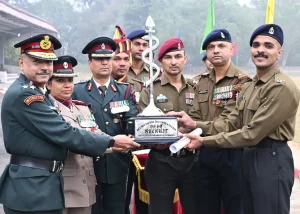India, situated in South Asia, shares its borders with several countries, each playing a crucial role in shaping India’s geopolitical landscape, economic ties, and security concerns.
CDS 1 2024 Neighboring Countries of India Lecture
Neighbouring countries of India at a glance
1- Afghanistan
Border Length- 106 km
Official Languages – Dari, Pashto
Currency – Afghan Afghani
2- Bangladesh
Border Line – 4096.7 Km
Official Language – Bengali
Currency – Bangladeshi Taka
3- Bhutan
Border Line – 699 km
Official Language – Dzongkha
Currency – Ngultrum
4- China
Border Line – 3488 km
Official Language – Mandarin
Currency – Chinese Yuan
5- Myanmar
Border Line – 1643 km
Official Language – Burmese
Currency – Burmese Kyat
6- Nepal
Border Line – 1751 km
Official Language – Nepali
Currency – Nepalese Rupee
7- Pakistan
Border Line – 3323 km
Official Language – Urdu
Currency – Pakistani Rupee
8- Sri Lanka
Border Line – Sea Border
Official Language – Sinhala, Tamil
Currency – Sri Lankan Rupee
9- Maldives
Border Line – Sea Border
Official Language – Dhivehi
Currency – Maldivian Rufiyaa
India has the third-largest international border in the world after China and Russia, and also the most sensitive border of the world that varies from extreme climatic conditions to infiltration.
Important Facts
- India and China have had historical connections dating back to ancient times. The signing of the Panchsheel Pact marked a significant milestone in our bilateral relationship. However, a border dispute in 1962 resulted in a war between the two nations. Over time, efforts have been made to improve relations between India and China.
- India and Pakistan were once part of a unified country, sharing a common heritage and culture. However, major conflicts and, more recently, the Kargil conflict have strained relations between the two nations. Nevertheless, ongoing efforts are being made to foster a friendly relationship with Pakistan.
- The South Asian Association for Regional Cooperation (SAARC) was established with the aim of promoting peace, stability, and economic progress in the region through mutual cooperation.
- India played a pivotal role in supporting the people of Bangladesh in their struggle for independence from Pakistani rule. This has led to the development and maintenance of strong political, economic, and cultural ties between the two nations.
- India and Sri Lanka share deep-rooted connections rooted in ancient history, mythology, and culture. While there have been some challenges related to the Indian-origin population in Sri Lanka, overall, our political and trade relations have remained positive.




















